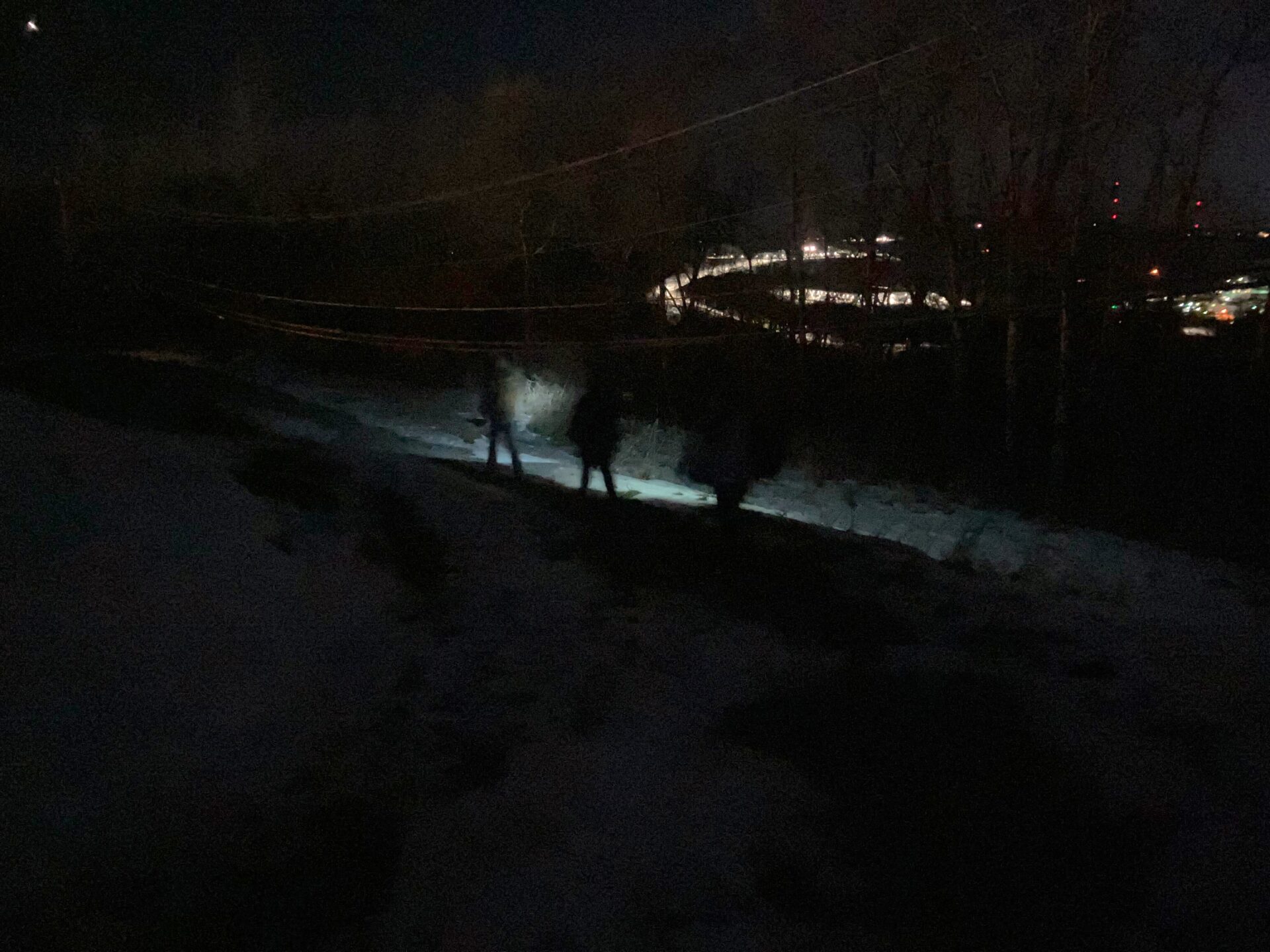Note: A shorter version of this story was published Jan. 30, 2025.
Each year, thousands of volunteers and advocates across the country come together on a single night in January to count people experiencing homelessness. That can mean quite a lot of legwork in the Mountain State.
Volunteers met at a bookstore in downtown Morgantown on the night of Jan. 29 before hitting the streets to take part in a 24-hour national initiative known as the Point in Time count.
Emily Hileman is the captain for the count in Monongalia County. She works for the West Virginia Coalition to End Homelessness, which coordinates the federally mandated count for most of the state.
“(The) Point in Time count is a night that shows what homelessness is like on any given night,” Hileman said. “It provides a snapshot of what that looks like in each of our communities across the state and across the nation.”
Covering 44 counties, the West Virginia Coalition to End Homelessness is the largest of four regions for homelessness advocacy in West Virginia. Designated by the U.S. Department of Housing and Urban Development as “continuums of care,” the other three are Cabell-Huntington-Wayne, the Kanawha Valley Collective and the Northern Panhandle region. Each conduct their own counts in their regions.
Hileman breaks the dozen or so volunteers into three teams. One group will walk the streets downtown, while another takes the rail trail by the river. Hileman’s team heads to the shelter at the edge of town, but only to park.
Rather than check on the individuals in the shelter, whose numbers will be added to the count later, Hileman and her team of volunteers walk by flashlight on a utility access road through the woodland outskirts of Morgantown. They look for any signs of habitation, like tents, tarps or mattresses.
“Anything that looks like somebody could have been here,” Hileman said.
These signs can indicate to volunteers where people are living with inadequate shelter.
Hileman takes her team down an icy hill, to the other side of the county shelter to try and gather just one of those essential data points. On this night they locate three campsites, all empty. For, Hileman it’s still worth it.
“This is essential data that we need now more than ever, especially in our communities,” Hileman said. “We need more services. We need more resources for individuals. We need more housing.”
Funding for homelessness relief services is tied to how many people are counted on this night. Last year’s count showed that close to 1,800 people experienced homelessness in West Virginia on a single night.
The count stretches a full 24 hours. Hileman started canvassing at 4 p.m. Wednesday, when she walked an estimated 6 miles on Morgantown’s rail trails. By the end of the night, she’s walked another 4 miles and plans to get up in the morning to do more canvassing before the 24-hour period ends at 3:59 p.m. Thursday.
But by Wednesday night, she said the count felt low.
“I would say that it seems like we’ve had less individuals this year,” Hileman said. “But that doesn’t necessarily mean that homelessness is less prominent in the community this year.”
She said the low count could be attributed to a myriad of reasons, from the cold weather forcing people to take temporary shelter to camping bans pushing people away from population centers. But with tallies coming in from other teams as well as shelters over the 24-hour period, Hileman said she was confident the count would be accurate..
More than 360 volunteers took part in the 2025 census across the coalition’s 44 West Virginia counties. Beth McCreight is one of those volunteers, as she has been involved for several years. McCreight, who last year led the count in Taylor County, agreed that the count felt different this year.
“It feels a little bit more intense, and not just because of the hiking. It feels like it’s time to really bear down and get accurate numbers to show the need,” she said. “Without this accurate number, we can’t prove to people that there is something wrong going on in the world.”
Despite all the volunteer’s efforts on the day of the count, an accurate number takes time to achieve.
Paige Looney is a data management specialist with the West Virginia Coalition to End Homelessness. A few days after the Point in Time count, she said her team is working to ensure the quality of the data that was collected.
“Part of the things we go through is to look for duplicates in very similar geographic areas,” Looney said. “Somebody’s got the exact same demographic information, same name, it’s likely that there’s two surveys that have been submitted on the same person.”
Looney said homelessness can feel like an invisible issue a lot of the time. But she is bolstered by the effort so many volunteers not only across the state but across the country put in to ensure an accurate count is made.
“The Point in Time count in particular is just a huge undertaking,” she said. “Our volunteers know their communities better than we do. It’s only really possible through them and their efforts.”
As of Monday afternoon, Looney said the coalition’s count for its 44 counties stands at just over 1,070, but a more official number is set to be released by Feb. 7. Their information will be combined with the other three groups to provide a total number of people experiencing homelessness in the state, which is expected by mid-February.
